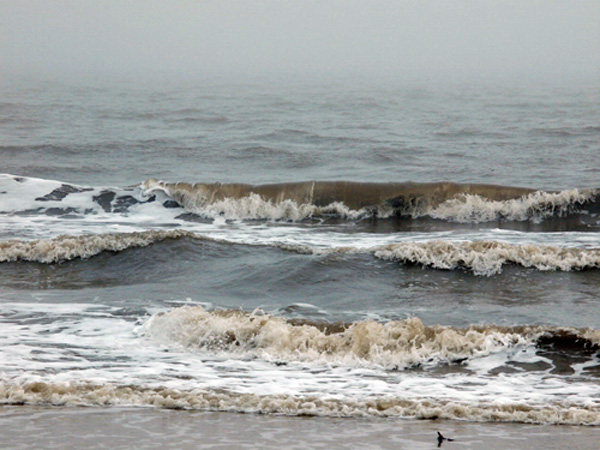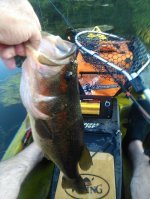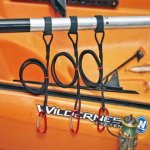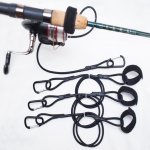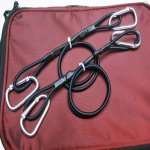~ Kayaking in Ocean Currents and Tides ~
How to Use Them To Your Advantage
If you are new to kayaking in the ocean, Gulf, marshes and brackish rivers, then a basic guide of ocean currents and tides will prove very helpful. The old saying that ignorance is bliss doesn't apply to the ocean, lakes or rivers. The sea shows no partiality and a simple knowledge of tides and currents can save you from a mountain of frustration.
There are a lot of similarities between kayaking freshwater lakes and kayaking in the ocean, but the differences can be monumental. In the ocean you have to learn to accommodate and use ocean currents and tides or you may find yourself in trouble.
It is important to know that not all tides are the same. In the same location, one part of the month may see a huge difference in tide water levels and at other times the tides may be hardly noticed.
Why is this important? An inexperienced kayaker may set out at normal water levels or at high tide and you may be extremely disappointed to find yourself dragging your kayak back to the launch site due to a lack of water.
In addition, strong tides create currents that will work in your favor or against you. Ocean currents and tides must be taken into account before paddling out to your fishing grounds or you may find yourself out of energy trying to paddle against a strong outgoing tide.
Neap Tides and Spring Tides
Tides are caused by the pull of the moon and the sun, but not all tides are the same. There are two basic tides: Spring Tides (strongest) and Neap Tides (weakest). Each tide peaks about 24 times a year.
Spring Tides
Spring Tides is the name given to the strongest tides. This equals the greatest pull of water and the largest difference between high and low tide. The largest pull of water also creates strong currents. Spring tides are formed when the sun, moon and earth are aligned creating the strongest pull on the water.
New Moon Spring Tides occur when the moon is perfectly aligned between the sun and the earth.
Full Moon Spring Tides occur when the moon and the sun are on exact opposite sides of the earth.
Neap Tides
Neap tides is the name given to the weakest tides. Water levels tend to remain neutral during peak neap times and locations may see very little difference between high and low tides.
How and When Neap Tides Occur
Neap tides occur when the moon and sun are aligned at right angles to the earth. If you draw a straight line from the moon to the earth then to the sun the line would form an "L" shape. In these cases the moon is pulling against the tide bulge formed by the sun's gravity and neutralizing the tide. Neap tides generally form in the 1st and 3rd quarter moons.
What to do with Ocean Currents and tides Information
If you are planning a fishing trip to the ocean, you would certainly check the weather forecast for wind and weather conditions. It is equally important to check the time the high and low tides occur. Knowing the moon phase will be helpful in determining how powerful the tide may be. Coastal regions on radio and tv usually offer necessary information to help you in planning your trip.
Pre-Visit a New Launch Site if Possible
If you have the
time, it is always best to visit the launch location the day before you
launch. Be sure to check the difference between high and low tides. Shallow water launch sites will often see the biggest draw down of water levels.
Fishing is generally better during high tide. During spring tides, if you are launching in a canal or river, launch down from the fishing grounds just after low tide. Allow the ocean currents and tides to carry you up river and after fishing the low tide can bring help you back to the then back launch site. If you choose a spot to launch during low tide, then returning in low tide will assure you will have plenty of water to exit after fishing.
It is not nearly as important during neap tides, but it is still a consideration.
Combining Ocean Currents and tides with wind
On days when the wind is coming off the land and blowing over the water, the wind tends to calm the waves so there is a much smaller surf. Most of the time, in the areas where I fish, this is not the case.
If the forecast calls for wind, then try to launch so you are padding into the wind. Then on the return when you are more tired the wind can work in your favor. Kayak fishing can be challenging so using the wind, ocean currents and tides in your favor can separate the novice from the experienced kayaker.
Sometimes the best-laid plans can go awry. I
remember when scuba diving in Hawaii, we climbed down the rocks to an
area where the sea was immediately 40 feet deep. Forty-five minutes
later we surfaced to a rough, white capped sea. Things change quickly and by the grace of God we
were able to make a rock exit without injury despite a pounding surf.
The above illustration can be similar for kayakers. The ocean can change quickly. If the weather forecast calls for some wind, then allowing the tides to work in your favor becomes more important. Paddling with wind can be challenging, especially if you are not an experienced paddler. If you plan wrong and are trying to come back in against a strong tide and against the wind, you may not have the strength to make it.
On the Gulf, during the summer, new kayak fishermen should have an exit plan and in some cases be off the water by 1 p.m. Storms often come up with little notice. If you see the dark clouds and lightening in the distance, head for shore.
I remember two fishermen were having a blast catching so many fish they ignored the storm growing on the horizon. Before long the storm was on top of them and they found themselves paddling back to shore against 50 mph winds and white capped seas. Scared half to death and arms that felt like spaghetti, they finally dragged their kayaks onto the sand. Several minutes later the storm was gone. Storms come and go quickly on the Gulf and they can quickly ruin a good day of fishing.
A little research on your launch location and taking a careful assessment on the tides can certainly make your fishing trip more enjoyable.
Ocean Currents and Tides to Hammerhead Kayak Supply Home
Copyright 2015-2025 Hammerhead Kayak Supply's Legal Information Our Privacy Policy and Terms of Use |
